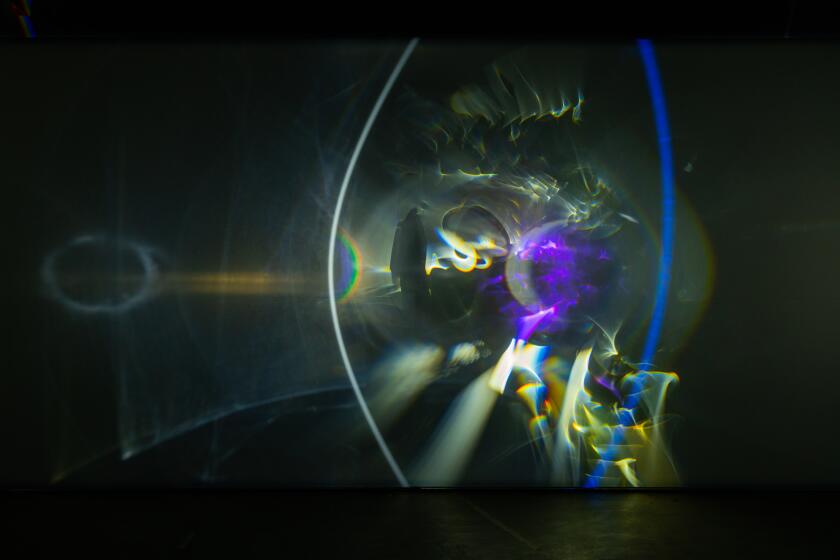Design gets its due in new LACMA show
“California Design, 1930-1965: Living in a Modern Way,” which opens Oct. 1 at the Los Angeles County Museum of Art, aims to dispel the myth that significant contributions by Californians during this period came mainly in art, architecture and high-design ceramics. Wendy Kaplan, head of the decorative arts and design department at the museum, calls them “the usual suspects.”
By extending the scope of her new exhibition to furniture, graphic design, fashion, surfboards, even the Studebaker Avanti designed by Raymond Loewy, Kaplan is arguing that what flourished in the state, particularly after World War II, was in fact a much broader movement, one whose influence extended far beyond California’s borders. Kaplan and her team have mounted 348 exhibits, including drawings of a house nestled in the Oakland hills by the under-acknowledged San Francisco architect Roger Lee, a 1948 brass necklace from Claire Falkenstein and gorgeous textiles designed by Alvin Lustig.
The show is divided into four sections starting with California during the Depression. Curators show how design, first inspired by such émigrés as interior designer Paul László and Modernist architect Richard Neutra, was further nurtured by the rapid technological changes brought on by wartime manufacturing and by the thousands who came to work in California’s defense plants.
Not until after the war, when the notion of owning a new house took hold, was a massive new market for design created. It took frequent cross-pollination between disciplines to create what curators call California’s new “middle-class Utopias.”
When architect John Lautner designed the Carling house, whose swimming pool extended from the outside into the interior, he was elaborating on a new sense of cultural casualness, according to Bobbye Tigerman, the museum’s assistant curator of decorative arts and design. At the time, the same philosophy was inspiring new swimsuit designs, relaxed outdoor furniture from Van Keppel-Green, even the startling popularity of blue jeans.
“Designers began to create new, more relaxed fashions that later would become synonymous with California sportswear,” said Melissa Leventon, senior adjunct professor of fashion design at the California College of the Arts in the Bay Area. “And blue jeans, signifying freedom in the way they do, are still the most successful fashion design ever created in this state.”
Graphic artists were similarly inspired.
“Much of the work of interior and furniture designers was promoted through suitably designed publications,” noted Jeremy Aynsley, history of design professor at the Royal College of Art in London. “Van Keppel-Green catalogs reinforced the ‘look’ of the furniture. Their covers were abstract, with colors associated with the designs themselves.”
The burgeoning market created by this explosion in home ownership during the 1950s, the focus of the latter part of the show, brought many artists into the commercial arena. Harrison McIntosh, for instance, was a solitary potter before being hired to design architectural tiles for the Interpace Corp.
The exhibition required curators to initiate a massive research project. “Many artists from this period are growing old,” Kaplan said. “In the last two years, we have lost the wonderful furniture designer Sam Maloof and graphic artist Frederick A. Usher.”
The museum recorded interviews with Maloof and Usher as part of “Living in a Modern Way.” Eleven artist profiles, including on graphic designer Louis Danziger and textile designer and jeweler Kay Sekimachi, were produced on video. Two-minute excerpts are in the exhibition. One hundred and forty-one written artist profiles are being assembled for a book to be published next year.
Ultimately, this movement fell out of favor. The hippies and political activists of the late 1960s showed little interest in what they saw as an overly standardized and impersonal design ethos. They preferred their own, often haphazard style.
“That’s why dates are important,” Kaplan said, underscoring the need to appreciate this rare moment in California’s history, one when so many artists brightened so many lives.
More to Read
The biggest entertainment stories
Get our big stories about Hollywood, film, television, music, arts, culture and more right in your inbox as soon as they publish.
You may occasionally receive promotional content from the Los Angeles Times.









